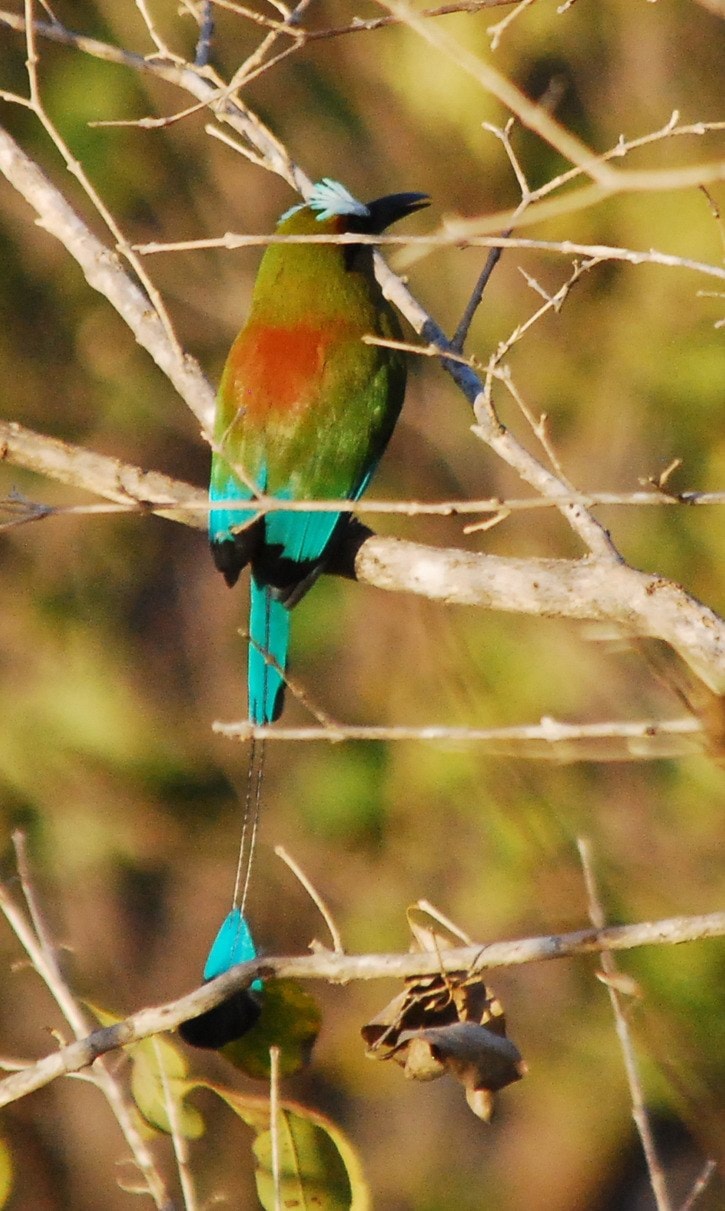Marie and I are currently enjoying some sunshine and warmth in Costa Rica. We are renting a condo that sits on top of a hill and backs onto the forest. Every morning at about 6:30, we take our coffee outside and sit on the patio for an hour or two and wait for the birds to come to us.
So far we have seen 40 species right outside our door. Some of the more exotic ones are Magnificent Frigatebird, Orange-fronted Parakeet, White-fronted Parrot, Squirrel Cuckoo, Canivet’s Emerald, (a hummingbird), Black-headed Trogon, White-throated Magpie-Jay, Turquoise-browed Motmot, and Stripe-headed Sparrow.
The area where we are staying is on the north Pacific coast. Unlike most of the country, it is very dry here, particularly at this time of year. Any time we find ourselves near a river, there are definitely more birds around. Unfortunately, most of the smaller creeks and streams are dry at the moment.
Birding is not easy, especially after 9:00 a.m. when it starts it get too warm. We try to get early starts but that still doesn’t leave a lot of time. The best birding day we’ve had so far was at a location we discovered by accident. We were planning on driving to Diria National Park.
As we were driving along the highway we noticed that our GPS was showing a swath of green paralleling the highway. We found a side road that led us to it. There we discovered a road running along the top of a dyke beside the Rio Tempisque, so we parked and walked along the road.
The proximity of the river produced a very lush strip of vegetation that attracted many birds. Before we were even out of the car we had identified Indigo Bunting, Painted Bunting and White-collared Seed-eater. In the space of a couple of hours we were able to see about 35 species.
The birding was so good there that we returned a few days later, but this time at six in the morning. The early start made a big difference and in three hours we had 55 species.
One of the first truly tropical species that we saw in Costa Rica was a Black-headed Trogon. This striking bird has a bright green back, an equally bright yellow belly with a complete black head and a long black tail which is boldly marked with broad white bands. Since then, we have seen two other species of trogon, one very similar and one with bright red replacing the yellow.
Another equally striking bird is the Turquoise-browed Motmot. The colours in this bird are so varied and intricate that only a picture can convey the image. The undersides are similar in colour to the back, but with a black throat patch bordered with blue.
One of the most delightful birds around the patio area is the Rufous-naped Wren. There are two in the area and they are building a nest in one of the small palms beside the pool. For several days we have been watching them as the tear apart an old nest, and use the material to build a new one! They continually chatter as they work and once in a while the male bursts forth into song. They are fairly tame and often land on the railings of the condo. They got quite upset yesterday when a pair of Great Kiskadees (members of the flycatcher family), began stealing material from their brand-new nest. Wrens can be quite feisty at times, and they seem to have dissuaded the Kiskadees from any further pilfering.
This weekend we are going to head inland and into the central mountains. Here the climate will be much different - tropical rainforest. Different climate, different habitat, different birds. Next time I’ll let you know what we found there.
